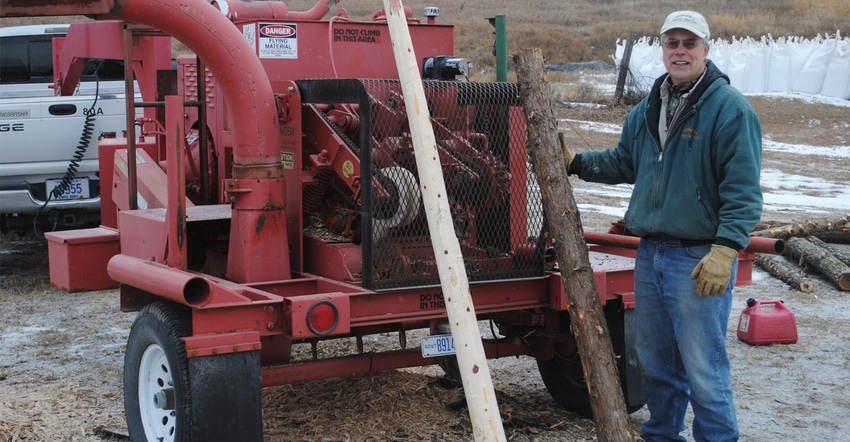
It is well-documented as the fastest-growing forest resource across the Great Plains, but eastern red cedar growing in pastures and rangeland often is considered a “weed” by farmers and ranchers.
That’s why state forestry agencies in those regions have spent years researching and promoting cedar tree utilization. For decades, ranchers have valued cedar posts for their natural decay-resistant properties.
Steve Rasmussen, Nebraska Forest Service district forester, has studied the types of cedar trees and cedar wood that make the best fence posts and landscape railing posts.
Rasmussen notes that before clearing pastures of cedar trees for eradication, it could be worthwhile to assess the value of the trees for sawlogs from the larger, old-stand cedars and posts from smaller-diameter trees.
He says that the red heartwood of the tree is the decay-resistant portion, but the bark and white sapwood surrounding the heartwood will deteriorate quickly when placed in the soil. Posts like that will become loose in the ground as the sapwood deteriorates, and fence staples nailed to the post will fall out.
That’s why the best posts come from trees that have at least a 3-inch diameter of dark red heartwood, with close growth rings at the smallest end. Usually, cedar trees that grow slower in dry soils make better posts than faster-growing trees in wet and moist soils.
Rasmussen says that the posts should be well-seasoned and dried before installing them into the ground. Fresh-cut or green posts with high internal moisture will decay at a faster rate than dried posts.
Producers can cut their post trees and allow them to dry for the best results. This drying time removes the moisture from the sapwood and in the cambium tissue directly beneath the bark.
If you want to speed the drying process, you can run green-cut trees through a post peeler to remove the decay-prone bark and sapwood and reveal the desirable heartwood.
The peeler also can help correct some minimal taper problems with individual posts. After peeling, the posts are more uniform, lighter and easier to handle. They also may be aesthetically pleasing for landscape timbers, porch or stair railings, or furniture use.
Peelers operate best on posts that are 8 inches in diameter or smaller and are less than 12 feet in length, with at least 3 inches of heartwood on the small end. If there are branch stubs, they should be flush-cut to the trunk. The bark needs to be clear of dirt or sand that can dull the peeler knives and make debarking more difficult.
Trees that produce the relatively straight, high heartwood posts have a minimum of taper from top to bottom. Trees such as that are generally found in crowded stands that are slower growing, with close growth rings and narrow sapwood. Those trees found in the open pasture generally are not the ones you are looking for when it comes to fence posts.
Crowded stand trees have smaller branches and less taper, because they are forced to grow upright because of limited sunlight. The open grown pasture trees are less desirable for posts because they are bushier, faster-growing with larger sapwood, and have wider growth rings, Rasmussen says.
Learn more about cedar tree utilization by emailing Rasmussen at [email protected].
About the Author(s)
You May Also Like






